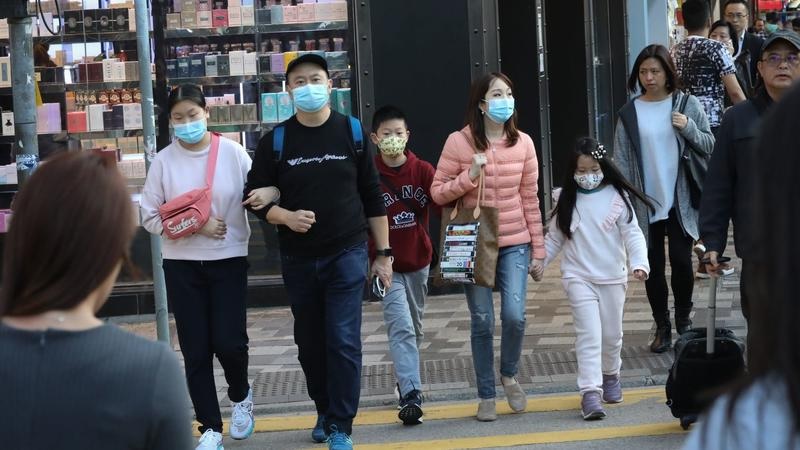China Mysterious Disease Outbreak: What is Mycoplasma Pneumoniae, the Bacteria that’s going round with a Virus?

Following reports of clusters of undiagnosed pneumonia cases in children in northern China, local authorities have observed a surge in respiratory diseases. This increase has been linked to the circulation of various pathogens, with mycoplasma pneumoniae being highlighted as a significant contributor. While this bacterium is less infectious than viruses like COVID-19, it has affected a considerable portion of the population.
The Lancet recently cited global prospective surveillance data indicating the re-emergence of mycoplasma pneumoniae in Europe and Asia, occurring more than three years after the implementation of COVID-19 pandemic restrictions. This delayed resurgence is noteworthy as it happened long after the cessation of non-pharmaceutical interventions, making it a phenomenon unique to this particular pathogen.
Dr. Nikhil Modi, Senior Consultant in Respiratory Critical Care at Indraprastha Apollo Hospital in New Delhi, explained that mycoplasma pneumonia is a bacterial infection associated with symptoms such as a dry cough, fever, and mild shortness of breath during exertion. Despite its prevalence, the infection is manageable, and there is no need for immediate panic. Dr. Modi reassures that standard medications prove highly effective against mycoplasma pneumoniae and can be easily controlled.
what is mycoplasma pneumonia ?
While it is not a newly discovered bacterium and has been in existence for quite some time, the recent outbreak in China has shed light on its widespread presence at the community level. Mycoplasma pneumonia is categorized as a bacterium, yet its behavior is more reminiscent of a virus, facilitating rapid person-to-person transmission. This bacterium targets both sides of the lungs, exacerbating coughs and respiratory distress by damaging the lining of the respiratory system, which includes the throat, lungs, and windpipe.
Interestingly, individuals may carry the bacteria in their nose or throat without exhibiting any symptoms of illness. In some cases, there can be a decline in oxygen levels. The current outbreak in China raises questions about potential changes in the bacterium, especially among vulnerable groups, although this remains unclear. Notably, a study revealed that mycoplasma pneumoniae remained subdued in China for almost two years due to the Covid countermeasures, which have now been lifted.
Medical professionals have been treating patients with this bacterial infection for many years. Antibiotics are administered in accordance with PCR (polymerase chain reaction) guidelines for effective infection control. In China, mycoplasma pneumonia has been coexisting with the HN92 virus, adding a layer of complexity to the situation.
How does it spread and what are its symptoms?
While not as contagiously rapid as a virus, this ailment can swiftly impact our throat and nasal passages before descending into the lungs, potentially leading to pneumonia. Therefore, it is crucial to minimize exposure to individuals exhibiting persistent coughing or sneezing, particularly in enclosed or crowded spaces. Symptoms encompass the breakdown of red blood cells, the development of a skin rash, and joint discomfort. The risk of contracting the infection is highest during the winter months. Children may manifest symptoms such as a congested or runny nose, a sore throat, watery eyes, wheezing, vomiting, and diarrhea.
How can one avoid this infection?
Enhance your immune system through a wholesome diet, regular exercise, and sufficient sleep. Steer clear of crowded areas and don a mask in social settings to shield yourself from various respiratory illnesses. Prioritize good hygiene by washing your hands before meals or following contact with individuals who may be infected.
Who is at risk?
Bacterial infections have the potential to induce pneumonia across all age brackets, with a heightened risk among children, the elderly, and individuals with compromised lung function. Should symptoms such as coughing, fever, and labored breathing manifest, seeking prompt medical attention is crucial. Early intervention significantly enhances the speed and efficacy of recovery. Individuals with pre-existing respiratory conditions are particularly susceptible to experiencing a more severe manifestation of this infection.
Are common antibiotics effective against the infection?
Numerous antibiotics demonstrate efficacy in combatting infections. Azithromycin proves effective in managing infections in children, whereas doxycycline and moxifloxacin are suitable options for treating adults. Nevertheless, it is imperative to consult with a healthcare professional before initiating any medication. Typically, a doctor can identify an infection through abnormal breathing patterns detected with a stethoscope. Additional diagnostic tools such as a chest X-ray and a CT scan may further aid the doctor in making an accurate diagnosis.


